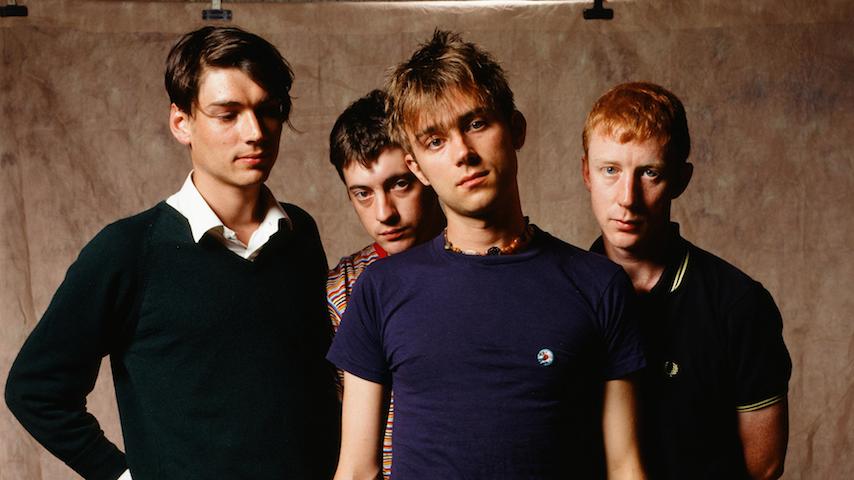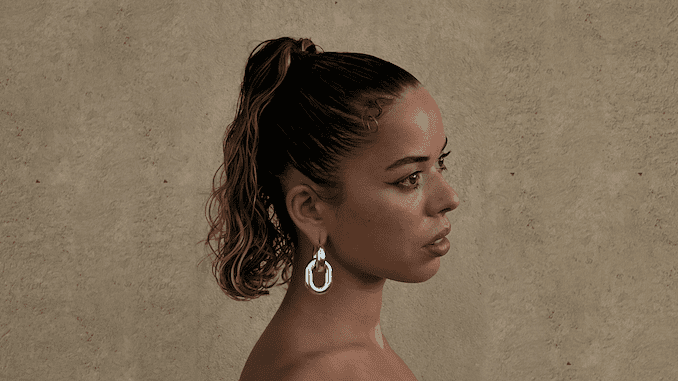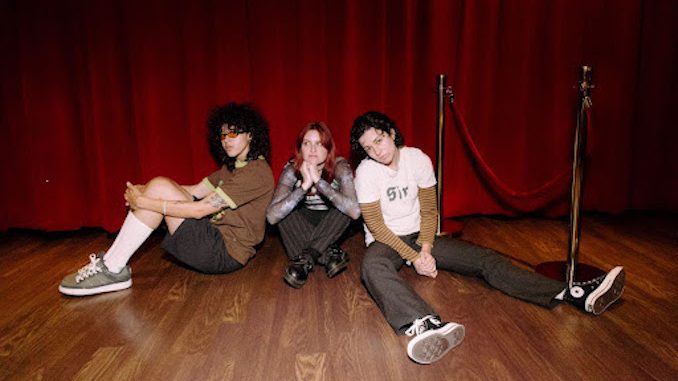The Britpop scene of the early-to-mid ’90s was rife with enough dramatics to fill a reality show. There was Suede, whose frontman Brett Anderson split with guitarist Justine Frischmann, prompting her to leave. Frischmann, one of the few women in the genre, led her own band Elastica. A couple of years older than the rest in the Britpop scene, Pulp was making risqué songs via frontman and songwriter Jarvis Cocker. Britpop was a spunky antithesis to moody U.S. grunge and grew in popularity during an era when it was cool to be British (a phenomenon dubbed “Cool Britannia”). However, it was Blur and Oasis who brought Britpop to the mainstream.
Blur formed in art school and were representative of a well-adjusted, middle class London lifestyle. Oasis were the opposite, a pair of Beatles-loving brothers from working class Manchester who were constantly feuding. The Blur-Oasis clash started in 1994, when Oasis released their debut Definitely Maybe and Blur, who formed in 1989, released their third album Parklife. Right away, the comparisons between the two groups were made. Apart from drugs, football, women and nifty jackets, Oasis were interested in nothing but pure, snarling rock ‘n’ roll, whereas Blur were more multi-faceted, taking influence from bands like The Who and The Kinks and providing social commentary of English society through Cockney accents. They became emblematic of two different parts of the country’s culture—the rough North and the posh South—even though their opposing stereotypes were exaggerated.
The following year, the feud skyrocketed. Dubbed the “British Heavyweight Championship” on the cover of NME in 1995, Blur and Oasis became musical tabloid fodder when they were in a chart war for a U.K. number one single. Both bands were set to release singles on the same week. In one corner, there was Oasis’ “Roll With It.” The other: Blur’s “Country House” from their fourth album The Great Escape. Blur won this round, earning their first number one song in the U.K. and critical acclaim.
Blur’s first three albums combined exuberant guitar riffs and frontman Damon Albarn’s signature exaggerated English vocals. Their early tracklists were marked by witty, playful songwriting and rock instrumentation, a sound they’re still known for today. Blur’s fourth album The Great Escape is much more than the band themselves made it out to be. It also was an album that continued to set them apart from their peers. After all, 1995 was Britpop’s best year, by a landslide (Oasis’ (What’s the Story) Morning Glory?, Pulp’s Different Class, Elastica’s self-titled debut).
Like its predecessor Parklife, The Great Escape still contained classic pop sounds, but it transmitted those in less traditional ways: strange riffs, horns and synths. It also delved into social commentary of suburban London in the mid-90s, with Albarn communicating via characters. Albarn even created a character for himself with the song “Dan Abnormal.” “Country House” and other TGE singles “Stereotypes” and “Charmless Man” were the sonic bridges between albums. They were radio hits that made casual fans go, “Oh yeah, this sounds like Blur,” but given the band’s adaptability, they managed to slip in subtle new sounds. Blur changed a lot after Parklife, the second LP in their “Life Trilogy.” The deeper cuts on The Great Escape—the final album in this Britpop trilogy—laid a pathway for where they would go on future albums.
While tales of British culture were present on Parklife and Modern Life Is Rubbish, here they fully embraced cynicism and grappled with monotony. Reflecting both suburban hysteria and bliss, Albarn turned out lyrics like “All we want is to be happy, in our homes like happy families” and “Other people turn around and laugh at you / If you said that these are the best days of our lives.” The idiosyncratic instrumental that opens “Best Days” sounds quite similar to their 1999 song “Tender.” “Top Man” and 13’s “Coffee and TV” are also comparative to one another through similar pacing and drum sequences. On The Great Escape, the band opted for more downtempo guitar tracks than their earlier albums, and they also leaned less on guitars. The changes made in this era—albeit subtle—saw them thinking bigger and became a pivotal point in their discography, with their two most recent albums, 2003’s Think Tank and 2015’s The Magic Whip, being their most outside the box.
With the two albums that followed The Great Escape, 1997’s Blur and 1999’s 13, Blur broke their yearly album release schedule. Between The Great Escape and their self-titled record, tensions between the band members became increasingly apparent. Albarn tried (and failed) to maintain the illusion of companionship—he even used a cardboard cutout and fill-in bassist to replace Graham Coxon and Alex James during a performance in Italy. Blur knew they had to rethink things to bring each other back together after this album. On subsequent records, they drew influence from American groups like Pavement, and other members got more chances to shine, particularly Coxon on vocals.
While Britpop splintered and never fully returned, Blur’s “Life Trilogy” still influences modern bands. One of the biggest bands on the planet, The 1975, borrow inspiration straight from Blur’s playbook. Frontman Matty Healy’s bold, sporadic mannerisms and social commentary feels akin to Albarn’s.
When I listen to this album specifically, I feel nostalgic for the good old days I wasn’t alive to witness. It served as a stepping stone for the things Blur members would create decades later. It’s also an incredibly crafted album that gave Blur their only Britpop number one song. Although the years have passed and Albarn’s repatched things with Oasis’ Noel Gallagher, I’ll still be here waiting for a Britpop revival that sounds as compelling as The Great Escape.




